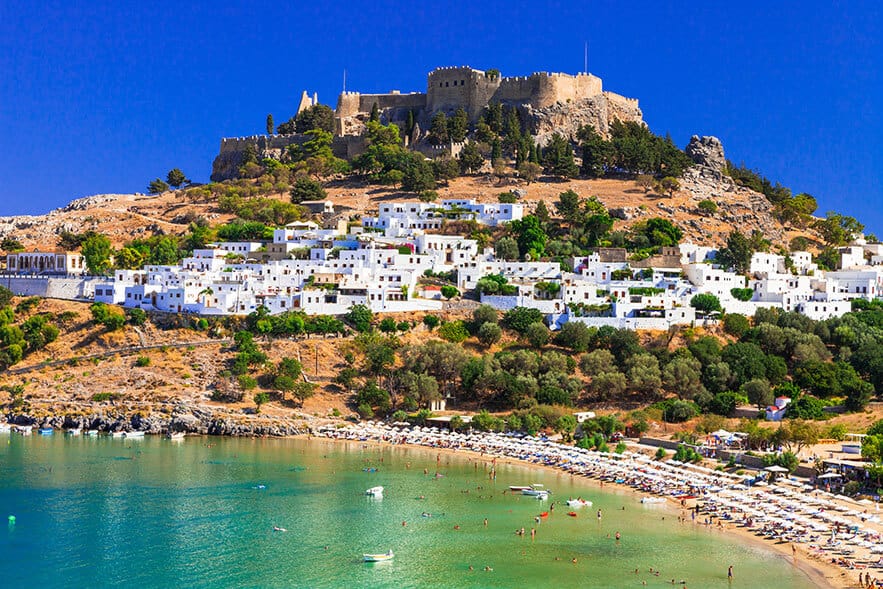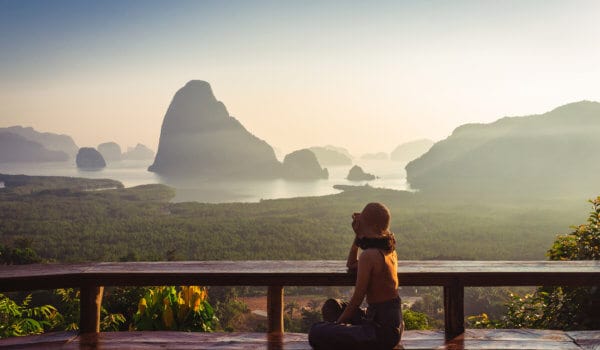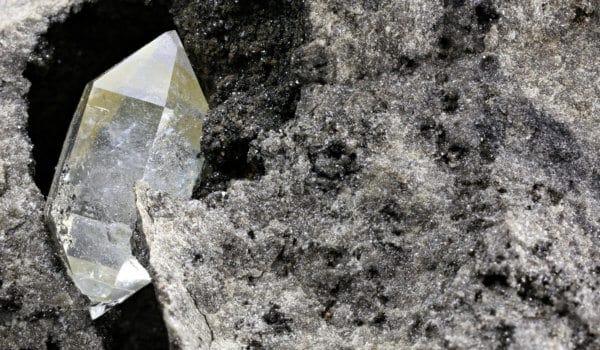Once upon a time, beautiful Greece lived in Europe. She had 2000 children. One of them, Rhodes, decided to hide and took refuge near Turkey.
Millions of years ago, when the earth was shaking and the volcanoes were erupting, on the crossroads of three continents – Europe, Asia and Africa appeared Rhodes, emerging from the sea. The ancient Greeks had their own legend about the island’s birth. One day, Zeus had vanquished the giants and became the ruler of the world. Either his generosity or his conscience prompted him to divide his lands among the Olympus “officials”. In their euphoria, or because of the drunken celebrations, they forgot about the missing god of sun, Helios. He, on the other hand, was offended by this injustice and decided to wait for the appearance, from the seas, of a new land which he was promised by the supreme guilty god. He didn’t have to wait for very long as shortly after, an island, covered in flowers, rose from the depths of the sea. Helios cherished his land as his own child, surrounding it with heat and sun. With such care, the “child” became the most beautiful island of the Aegean Sea. It’s said that Rhodes owes its name to the fragrant roses which grow across its plains. The legend also claims that Helios named his island after his wife, a beautiful nymph, daughter of Poseidon and Aphrodite. Could he even imagine that, someday, Rhodes will become the most visited island of the Dodecanese archipelago?
It’s up to you to decide if you want to believe or not in the divinity of this popular resort. However, a huge 36-meter high statue of the Greek Titan Helios, better known as the Colossus of Rhodes was erected in its owner’s honor. It’s considered to be one of the Seven Wonders of the World and was built near the city harbor entrance in the year 280 BC. We can only guess about its huge size from the remaining archives. It’s not easy to imagine that, by far, not everybody could grab the giant’s finger with both hands and that ships could easily sail in between its legs! It took twelve years to build the bronze statue and, half a century later it was destroyed by an earthquake. It’s unclear who upset Rhodes at that time, but the legend claims that the city’s favorite ornament was repeatedly destroyed by new earthquakes after all the attempts to rebuild the Colossus. However, the promise to revive one of the wonders of the world may still be accurate and, one day, we might get to see the lighting installation of the German artist, Gert Hof, which, in size, will be several times higher than the original statue.
Even without the future project, Rhodes is well known for its miracles. The island’s area is almost a 100 km² less than the area of Mexico City but there are still enough fascinating sights. In Rhodes capital, the city of Rhodes, the attention and the camera are caught by the Rhodes castle. The great masters of the Rhodes Order have settled here over six centuries ago. The Knights Hospitaller moved here when the Crusaders lost the Holy Land and built a fortress so persistent, that it’s considered to be the most impregnable of the Christian fortresses. Later, these same knights moved to Malta and created there, their legendary fortifications. During the siege, the fortress could withstand up to 1,000 cannon shells a day and today, the same number of tourists visits the castle every day. And it’s still standing!
Two columns carrying bronze deer statues, symbols of the island of Rhodes, still remind us about the Colossus, or rather about its hypothetical location near the Mandraki harbor entrance. Not far from these columns stands the Cathedral of the Annunciation, known for its exquisite, Gothic style, wall murals. Do not miss out the “Casino”, the first hotel in Rhodes, built by the Italians back in the 1932. Incidentally, the island is very sympathetic to the wishes of its guests and, therefore, it’s not a sin here to try yourself in gambling. However, it’s a sin not to visit the Monte Smith hill! From the old town of Rhodes, the Odos Diagoridon Street goes all the way to the best viewing platform of the city. You will find there the partially preserved temple of Apollo Pythian, the ancient stadium and the school of oratory art, which reminds the legendary Acropolis of Rhodes. Hence, the historical center, listed as a UNESCO World Heritage Site, is a particularly harmonious place. After an exciting tour, it’s always a good idea to rest in a local restaurant. I will not uncover the secrets of Greek cuisine and will leave that honor to you. But I will praise the Greek crisp coffee which can wake up even the sleeping beauty. Only the Greeks, after the fifth cup, still manage to stay in their “halara” spirit (doing nothing). By the way, the treacherous Greek “halara” can be very surprising (when merchants peacefully sleep at work during lunch time), or even outrageous (when a meeting is scheduled for exactly noon, Greeks always tend to arrive 45 minutes later) and can discreetly sneak up even to you (when spending three hours in a cafe with friends instead of 15 minutes).
To fight this sweet idleness, you need to get in a car or a bus and go to the “valley of butterflies”. This unofficial name of the Petaludes Valley is due to the fact that, each year, at the end of May, tens of thousands of insects, from all over Europe, gather there. They are attracted by the scent of the special resin emitted by the styrax trees growing there. During that time, the whole area of the protected valley fills with red lanterns, which flash with each wing stroke of the Bear-butterfly.
When going to the south-east from the valley, don’t forget to stop in the second-largest city of the island, Lindos. Its Acropolis is considered as one of the oldest in Greece. Even today, you can notice parts of certain ancient buildings, including the most appreciated by the Greeks, the ruins of the Doric Temple of Athena Lindia. As in ancient times, Greeks respect wisdom. Not far from the Acropolis, in the bustling harbor of St. Paul, stands the St. Paul’s chapel. As the history tells us, this missionary arrived to Rhodes in 1943, in order to preach Christianity. It’s said that, on a sunny day, Turkey can be seen from here as it’s only a stone’s throw away! The southern tip of Rhodes, Prasonisi, is only a few kilometers away by car. This unique place is the meeting point of the Mediterranean and the Aegean seas. It’s also the only place where you can walk to the nearest island. Constant and strong winds create great surfing conditions for the surfers. In the winter, the sandy part of island is often under water and therefore it’s best to walk along the boundary between the seas in the summer. This is your chance to swim in both seas at once! When you get bored, don’t hesitate to explore the beautiful hills and mountains of Rhodes, with its highest mountain, Mount Atabiry (1215 meters).
Don’t think that one week will be too long to spend on this relatively small island (length – 78 km, width – 38 km). It will take over a week to just walk around the entire 220-kilometer coastline of Rhodes. Most likely, you will want to stop at every scenic beach and bay that you will find on your way, to swim in the clear warm sea and to enjoy the sunshine. No wonder that Rhodes is considered to be the sunniest of the Greek islands. Chances are that, even today, Helios cherishes Rhodes during its 300 sunny days of the year and rests somewhere on a quiet beach during the remaining 65 days.
Photo: Shutterstock
Support us!
All your donations will be used to pay the magazine’s journalists and to support the ongoing costs of maintaining the site.
Share this post
Interested in co-operating with us?
We are open to co-operation from writers and businesses alike. You can reach us on our email at [email protected]/[email protected] and we will get back to you as quick as we can.









